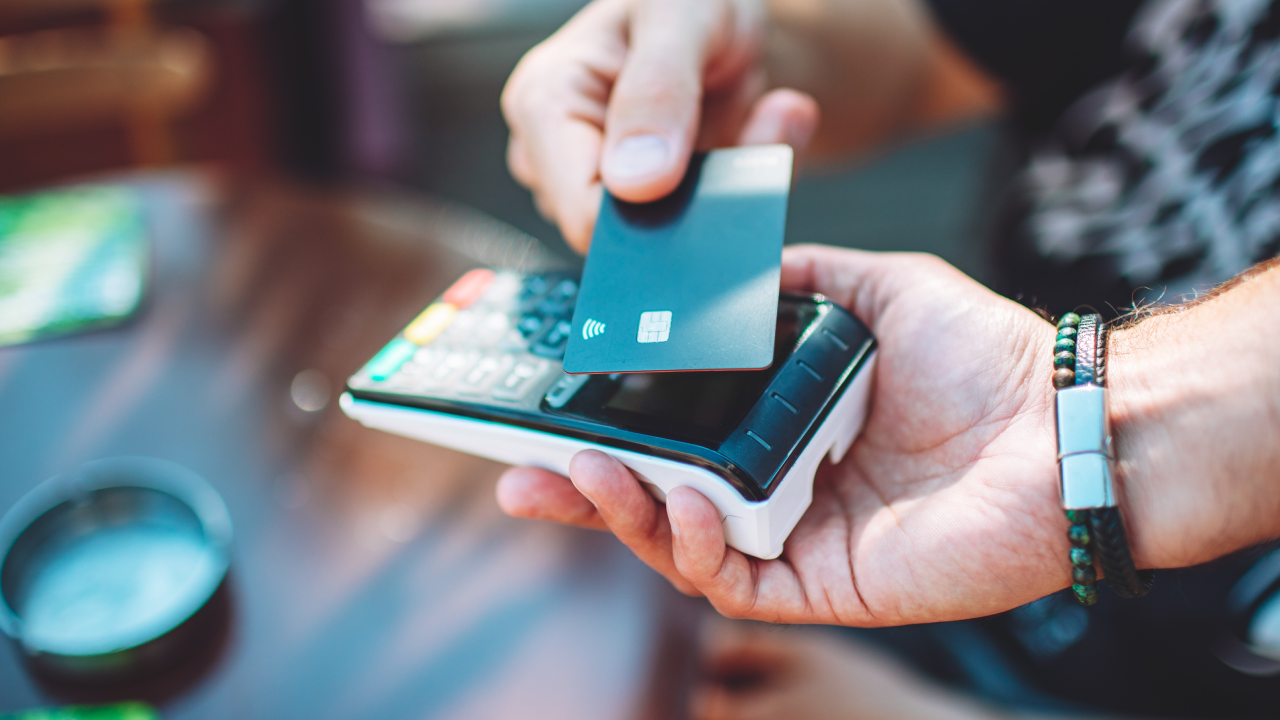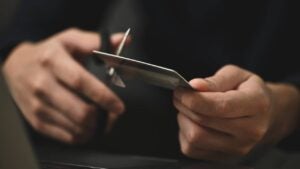How to clean your credit cards

Key takeaways
- Cleaning your credit cards routinely and storing them safely can help you avoid premature wear and tear to your cards.
- Keeping your cards clean can also help you avoid spreading bacteria and viruses that may have come in contact with your cards.
- To limit the amount of surfaces you touch with your credit card, consider using contactless payment methods and digital wallets.
Your credit cards can stand up to a surprising amount of wear and tear — but that doesn’t mean they’re indestructible. They can get scratched, chipped, faded and even just plain dirty from everyday use. To help them last as long as possible — or at least until they expire — you’ll want to store them safely and clean them routinely.
This guide will tell you how to clean your credit cards without damaging them, as well as what to keep in mind while using them for purchases.
4 steps to clean your credit cards
Keeping your cards clean will not only help them last longer, but will also reduce the potential spread of bacteria and viruses. That’s because your credit cards act as a point of contact between you and other surfaces — like a payment terminal or even a cashier’s hands— so cleaning your credit cards can clean off any pathogens that may have accumulated there.
To clean your credit cards without degrading the integrity of the card itself, follow these steps:
- Rinse the card. Using cold or lukewarm water on your card won’t damage it, but you should avoid using hot water. This initial rinse should be just to get off anything surface-level and easily cleanable.
- Get the card sudsy with soap and water. Use a non-abrasive soap and give it a gentle rub for about 20 seconds. Don’t use too much force, or you may cause premature wear of the card.
- Carefully clean all of the card’s crevices, including the chip. The chips seen on credit cards are water-resistant, so as long as you clean the chip’s surface carefully, you shouldn’t damage it.
- Dry the card. Clean away all of the soap and pat it dry with something like a paper towel or microfiber towel.
If you prefer, you can also just wipe your cards down with a disinfectant wipe, but you’ll want to make sure the wipes have a gentle formula that won’t damage your card.
Keep in mind: You may notice that your signature faded or got wiped away when you cleaned your card. If this happens, you can simply re-sign it once the card is dry.
What to avoid when cleaning your credit cards
Avoid soaking your cards in cleaning substances or cleaning them with abrasive sponges or soaps. Credit cards, especially ones with chips, are considered water-resistant, not necessarily waterproof. They’re not really meant to withstand prolonged contact with water or corrosive substances, so you may damage your chip if you use a strong cleanser on your card.
You should also avoid storing your cards somewhere you can easily damage it, such as loose in your pocket or purse as opposed to in a secure wallet.
How often should you clean your credit cards?
How often you should clean and disinfect your cards will come down to how often you make in-person transactions. If you’re using your card outside of the home multiple times a day, cleaning your cards after each use is ideal. If there is a hand sanitizing station in the store, consider also cleaning your hands after you finish making your purchases. If not, try to wash your hands and clean your cards when you return home.
How to limit contact when you pay with a credit card
Limiting how many surfaces come into contact with your card is an important step in keeping your card clean. This includes card readers and even your own hands. You can start limiting those surfaces by using contactless cards and mobile wallets.
Contactless cards
Most new credit cards allow you to tap or wave your card at a terminal to pay, meaning you can avoid swiping it. If you don’t have a contactless card, you can request one from your card issuer.
Mobile wallets
Mobile wallets, also called digital wallets, can be synced to the cards you already have, contactless or not. So, as long as you’re shopping somewhere that accepts mobile wallet payments, you can use your phone instead of your physical credit card.
The bottom line
If you want to prolong the life of your credit cards and keep yourself healthier in the process, then you can start by keeping your cards clean. In addition to washing them with mild soap, you can keep your cards clean by avoiding contact with other surfaces altogether. Contactless cards and mobile wallets are a great way to do so.
Why we ask for feedback Your feedback helps us improve our content and services. It takes less than a minute to complete.
Your responses are anonymous and will only be used for improving our website.






